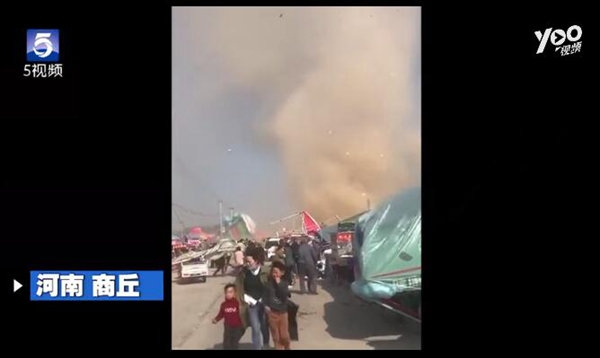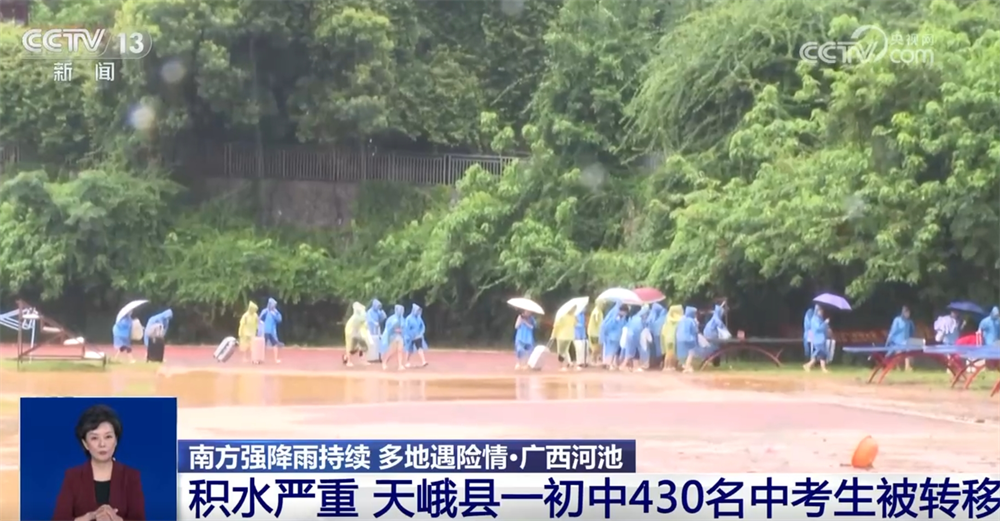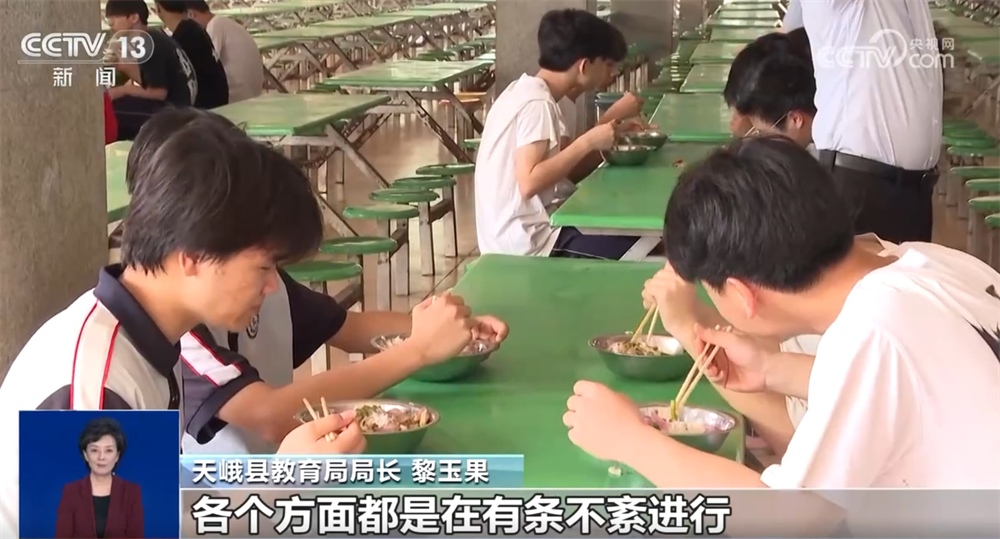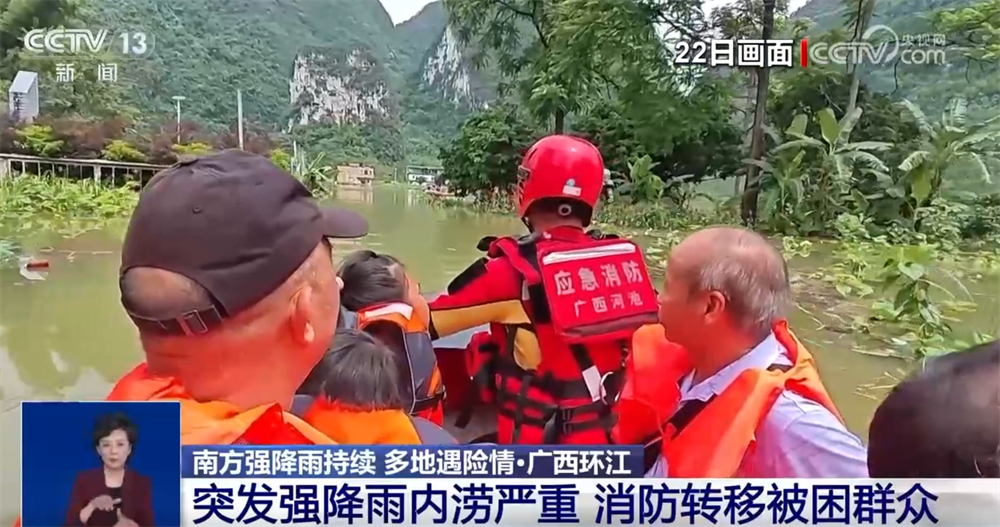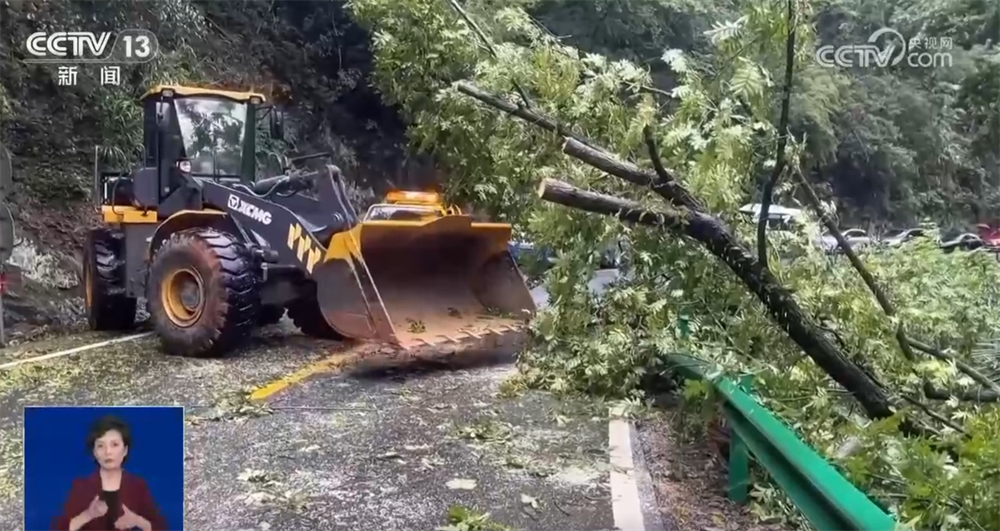[the Communist Party of China (CPC) people’s spiritual pedigree]
A key measure to determine the future and destiny of contemporary China
— — Comment on the spirit of reform and opening up
Guangming Daily reporter Changhe Li Fang Wenyuan
History goes back to 1978. This year, the Communist Party of China (CPC) led the people to initiate the great and far-reaching reform and opening-up, from which Socialism with Chinese characteristics embarked on a magnificent and great journey.
General Secretary of the Supreme Leader delivered an important speech at the celebration of the 40th anniversary of reform and opening-up, stressing that the great spirit of reform and opening-up forged by reform and opening-up has greatly enriched the connotation of the national spirit and has become the most distinctive spiritual symbol of the people of contemporary China!
For more than 40 years, from the "single spark" of fixing production quotas to households to the flourishing of comprehensively deepening reform; From the establishment of special economic zones to the establishment of a socialist market economic system and a new development path; From poverty alleviation to all-round victory, to embarking on a new road to achieve the goal of the second century … … Reform and opening up have become the most remarkable and magnificent weather in contemporary China.
At the celebration of the centenary of the founding of the Communist Party of China (CPC), General Secretary of the Supreme Leader pointed out that the people of the Communist Party of China (CPC) and China solemnly declared to the world with heroic and tenacious struggle that reform and opening up is a key measure to determine the future and destiny of contemporary China, and China has made great strides to catch up with the times!

New Pattern of Opening to the Outside World (oil painting) Sun Hongmin, Jiang Zhe, Wang Xue, Huang Weichao, Jiang Hao, Sun Guangxu, Huang Haozhang and Jia Wenguang.
1. Emancipate the mind and seek truth from facts
If you want to know the avenue, you must first make history. Let’s go back to 1978.
On May 11th of that year, Practice is the only criterion for testing truth, which was published in Guangming Daily, set off a great discussion on the criterion of truth. On December 13th, Comrade Deng Xiaoping’s speech "Emancipate the Mind, Seek Truth from Facts, Look Forward with Unity" at the closing meeting of the Central Working Conference became an important mobilization order. On December 18th, the Third Plenary Session of the 11th CPC Central Committee was held in Beijing, which kicked off the reform and opening up. On the cold night of that year, 18 plowmen in Xiaogang Village, Fengyang County, Anhui Province pressed their bright red handprints, which started the rural reform in China.
A big discussion, a mobilization order, an important meeting, and a "spring thunder" of reform. Since then, reform has become a strong voice of the times, and opening up has become the trend of the times.
Prior to this, in the winter of 1977, the entrance to the college entrance examination, which had been closed for 11 years, was reopened. The resumption of the college entrance examination system has not only changed the fate of many people, but also become a turning point in the development of a country and the times. In March 1978, the National Science Conference was held in Beijing, and the spring of science came.
General Secretary of the Supreme Leader emphasized that reform and opening up is a great awakening of our party, and it is this great awakening that gave birth to our party’s great creation from theory to practice.
Forty-three years ago, Yan Hongchang, a farmer from Xiaogang Village, Fengyang County, Anhui Province, stood in front of the shabby hut on the Jianghuai watershed, looking nervous: he took 18 farmers in rags and set up a "life and death contract" in a low and shabby hut, pressed his bright red handprint and started a "big contract"; On February 3, 2021, Xiaogang Village, the "first village of rural reform in China", ushered in its fourth dividend. Now, Yan Hongchang stood in front of the brand-new road in Xiaogang Village and told reporters: "I just wanted to ‘ Live ’ , I have done it now ‘ Get rich ’ . Various reforms have sprung up, so that ordinary people can eat, live and wear, and everyone can live in Xiaoyanglou. This is a good day to look forward to! "
The first breakthrough in rural reform has set an example and accumulated experience for reforms in other fields.
In June 1979, on the west side of Qianmen Arrow Tower in Beijing, the Big Bowl Tea Youth Tea Club opened its doors, and the word "self-employed" became more and more known. Almost at the same time, Zhang Huamei of Wenzhou, Zhejiang Province set up a small table at her door and put a needle thread on it. In 1980, Wenzhou established an industrial and commercial office, and Zhang Huamei became the first self-employed person in Wenzhou to obtain a license. This self-employed business license is also the first in China since the reform and opening up.
The market wants something, and the policy should respond. In October 1981, the Central Committee of the Communist Party of China and the State Council made "Several Decisions on Broadening Access, Invigorating Economy and Solving the Employment Problem in Cities and Towns", pointing out that it is a strategic decision and by no means an expedient measure to implement a variety of economic forms and modes of operation for a long time under the fundamental premise that the socialist public ownership economy is dominant. We must focus on opening up employment channels in the collective economy and individual economy, and gradually form a set of labor and employment system that is conducive to developing the national economy and improving people’s lives.
When the individual economy develops to a certain scale, it is bound to be run by employees. In Wuhu, Anhui Province, the employment of Nian Guangjiu, a self-employed "fool melon seeds", caused a lot of controversy. "Individual employees exceed the regulations of the State Council, which can’t impact socialism." Comrade Deng Xiaoping’s statement and the subsequent introduction of a series of related policies have promoted the development of individual and private economy.
In 1985, the agricultural product brand "fool melon seeds", known as "the first business card of individual and private economy in China", broke through the ice in Wuhu, Anhui. In 2012, "Three Squirrels" grew and developed here. From "fool melon seeds" to "Three Squirrels", Wuhu witnessed not only the changes in the retail industry, but also the development and improvement of China’s economy, society and people’s living standards since the reform and opening up.
For more than 40 years, the great ship of China’s reform and opening-up has been breaking waves and marching forward.
In 1985, the Central Committee of the Communist Party of China and the State Council issued "Ten Policies on Further Activating the Rural Economy" and decided to reform the system of unified purchase and distribution of agricultural products; In 2000, the Central Committee of the Communist Party of China and the State Council issued the "Notice on the Pilot Work of Rural Tax and Fee Reform", requesting to explore the establishment of a standardized rural tax and fee system and an effective way to fundamentally reduce the burden on farmers … …
Today, China’s grain output has increased from 304.77 million tons in 1978 to 1,339 billion Jin in 2020, and it has been stable at more than 1.3 trillion Jin for six consecutive years, and the foundation of granaries in big countries has become more and more solid. Chinese firmly held the rice bowl in his own hands, creating a great miracle of feeding nearly 20% of the world’s population with less than 9% of the world’s land resources.
Socialism with Chinese characteristics, socialist market economy, socialist country ruled by law, socialist harmonious society and socialist ecological civilization, as well as the development strategy of "three steps", the formation of the goal of "two hundred years", the proposal of "Chinese dream" and the strategic arrangement of "two steps" … … This set of great theoretical and practical innovations, which are constantly being developed and perfected, continuously promoted and deepened, is being performed brilliantly on the land of China. Emancipating the mind and seeking truth from facts have always led and accompanied the reform and opening up.
"Our future lies in the field of hope … …” This song, which was popular in China in the early 1980s, sang the feelings brought by the reform and opening up.
Great practice has proved that it is precisely by persistently proceeding from China’s national conditions and unswervingly carrying out reform that China has made achievements in economic construction, political construction, cultural construction, social construction, ecological civilization construction and other aspects over the past 40 years of reform and opening up, and today’s motherland is prosperous.
2. Pioneering, innovative and courageous.
On September 24th, 2021, the Supreme Leader of president pointed out in his video message to the 2021 Zhongguancun Forum that "Zhongguancun is the first national independent innovation demonstration zone in China" and "China supports Zhongguancun to carry out a new round of pioneering and testing reform, accelerate the construction of a world-leading science and technology park, and make new contributions to promoting global exchanges and cooperation in scientific and technological innovation".
From the "Electronic Street" in 1980s to the Zhongguancun National Independent Innovation Demonstration Zone, and the commanding heights and weathervanes of global scientific and technological innovation, Zhongguancun, a "reform experimental field", has become a banner of innovation and development in China after years of development, providing a batch of "Zhongguancun experience" that can be replicated and popularized for the whole country. Here, the first private science and technology enterprise in China, the first enterprise whose business scope is not approved, the first enterprise whose intangible assets account for 100% of the registered capital, the first limited partnership investment institution, the first government guidance fund and the first local legislation of science and technology parks … … From scratch, the development of Zhongguancun is both a history of innovation and a history of reform.
"Fighting our way out" is a true portrayal of China’s reform and opening up, and it is also a true embodiment of the Communist Party of China (CPC) people’s pioneering and innovative spirit.
On November 23, 2020, Guizhou Province announced that the remaining nine poverty-stricken counties had withdrawn from the poverty-stricken county sequence. So far, all 832 poverty-stricken counties in China have been lifted out of poverty. The problem of absolute poverty that has plagued the Chinese nation for thousands of years has come to an end, created the China miracle in the history of human poverty reduction, and embarked on a road of poverty reduction with China characteristics.
This people’s war of "shocking the world" is itself a great innovation.
On April 24, 2016, General Secretary of the Supreme Leader pointed out during his investigation in Dawan Village, Jinzhai County, Anhui Province that tackling poverty has entered the sprint stage of gnawing hard bones and attacking villages, and we must grasp it with one heart.
Today’s Dawan Village, once muddy dirt roads have become clean cement avenues, and villagers have also moved from low and dilapidated houses to Xiaoyanglou, creating an integrated tea industry chain and photovoltaic poverty alleviation industry chain, and farmhouse tourism has flourished.
From "Xiaogang" to "Dawan", from the "life-and-death contract" more than 40 years ago to the comprehensive poverty alleviation today, every step we have taken highlights the efforts made in rural development since China’s reform and opening up. Behind the miracle of China is the innovation of a big country and the responsibility of a big party.
Dare to venture, try and innovate. Made in China, created in China and built in China are amazing in the reform and opening up. As far as the construction of China is concerned, infrastructure construction, such as high-speed rail, highways, bridges, ports and airports, ranks among the best in the world. By the end of 2020, the national high-speed railway had a mileage of about 38,000 kilometers and an hour of 350 kilometers. Fuxing was running on the Beijing-Shanghai line. Among the top 10 ports in the world, China has 7 seats; 10 tallest bridges in the world, 8 in China; The 632-meter-high Shanghai Tower has become the tallest green super skyscraper in the world. The Hong Kong-Zhuhai-Macao Bridge, which has set a number of the best in the world, has been opened to traffic.
From the establishment of special economic zones to the integrated and high-quality development of the Yangtze River Delta, from the coordinated development of Beijing, Tianjin and Hebei to the construction of a new pattern of regional high-quality coordinated development, from the fight against poverty to the implementation of the rural revitalization strategy, from the major strategic achievements in fighting the COVID-19 epidemic to the comprehensive promotion of healthy China construction … … From sailing to hitting the water, from a hundred things to fruitful results, courage and enterprising spirit run through the whole process of reform and opening up.
Kunpeng spread its wings, Xiaolong entered the sea, Eye of the Sky patrolled the sky, and Wukong explored the sky … … A large number of major scientific and technological achievements have come out one after another, alarming the world. The Chang ‘e-5 returner successfully landed with the moon sample, the Endeavor all-deep manned submersible successfully completed the 10,000-meter sea trial and successfully returned, the Beidou system completed the global networking deployment, and China’s "artificial sun" successfully "burned" for 101 seconds at 120 million degrees Celsius. The "Nine Chapters" computer helped China realize the "quantum computing superiority" for the first time & HELIP; … Without daring to try and innovate, there would be no Socialism with Chinese characteristics Road, a series of new experiences, new things and new miracles, and there would be no amazing world made in China, created in China and built in China.

There are many tall buildings in Lujiazui, Shanghai. Photo by Wang Gang/Bright Picture
3. Open, inclusive and inclusive
"China is willing to work with other countries to build an open world economy and let the open spring breeze warm the world!" At the beginning of November this year, the 4th China International Import Expo opened, and the words hit the floor in the keynote speech of the Supreme Leader of president conveyed to the world the strong voice of the times that China firmly expanded its opening up and joined hands with other countries for win-win cooperation.
Opening-up is an important content of reform, and it is also an important way to promote reform. It aims to open the country to learn advanced concepts, technologies and management from the world and learn from the outstanding achievements of human civilization. Since ancient times, with the broad mind of "Great Harmony in the World" and "Harmony in All Nations", the Chinese nation has confidently and generously carried out ethnic exchanges and cultural exchanges with other countries. It once wrote Long song, the vast silk road of Camel Bell Wan Li Wave in Wan Li, and once created the prosperous Tang Dynasty atmosphere of Chang ‘an, the World Dress Club. With thousands of years’ historical view, reform and opening-up are generally the historical normal of China. The Chinese nation continues to move towards the future with the attitude of reform and opening up, which has far-reaching historical origins and profound cultural roots.
Openness is a distinctive symbol of contemporary China. From the "first shot" to wake up the southern land, Shekou set up the first export-oriented economic development zone in China, and set up special economic zones such as Shenzhen, Zhuhai, Shantou, Xiamen and Hainan; Take the lead in opening up from the eastern coast to the comprehensive opening up along the river, along the border and in the inland areas of the central and western regions; From "bringing in" to "going out", make full use of two markets and two resources at home and abroad … … For more than 40 years, China has always faced the world with an open mind, and the development of express trains has been on the right track.
Shanghai, which successfully hosted four consecutive China International Import Expo(CIIE) sessions, is a banner of reform and opening-up flying at the mouth of the Yangtze River. In April 1990, the CPC Central Committee and the State Council made a major decision to develop and open Shanghai Pudong. Since then, "thinking by the globe" has created the openness and innovation written in the bones of Pudong people. Over the past 30 years, the former farmland butterfly has become a modern new city with concentrated functions, complete elements and advanced facilities, where the first financial and trade zone, the first bonded zone, the first wholly foreign-owned trading company, the first foreign-funded bank and the first pilot free trade zone have emerged.
Shenzhen Xingtao, Hainan Surfing, Pudong Surfing … … The practice of reform and opening up around the clock has injected the spirit of openness, tolerance and inclusiveness into the spiritual veins of the people of China, painting a magnificent picture of the Chinese nation’s "striding to catch up with the times": in 1978, the per capita gross national income of China was only US$ 200, and the total economic output of China only accounted for 1.8% of the world; Today, China is the second largest economy and the largest industrial country in the world.
The history of China’s opening to the outside world shows that the bigger the mind and the farther the vision, the greater the development space. China’s continuous opening-up has activated the surging spring tide of China’s development and a pool of spring water of the world economy.
This year marks the 20th anniversary of China’s accession to the World Trade Organization. In the past 20 years, China has fully fulfilled its WTO commitments, and the overall tariff level of China has dropped from 15.3% to 7.4%, which is lower than the WTO commitment of 9.8%. China has constantly revised its laws and regulations to adapt to multilateral trade rules. The central government has cleared more than 2,300 laws and regulations and local governments have cleared more than 190,000. China has continuously opened the service market and reduced the negative list of foreign investment access, and has opened nearly 120 sub-sectors, exceeding the 100 sub-sectors promised when China entered the WTO.
This year marks the eighth anniversary of the "One Belt, One Road" initiative. As a new exploration and practice of opening to the outside world in the new era, the seed of the dream of "One Belt, One Road" has grown into a towering tree, bearing fruitful results: a large number of infrastructure projects such as Jakarta-Bandung High-speed Railway, China-Laos Railway, Gwadar Port and Hambantota Port have been solidly promoted; A wide circle of friends has been built, and China has signed cooperation documents with 140 countries and 32 international organizations; Exploring new ways to promote common development conforms to the common aspiration of most countries in the world for development.
This is an open, inclusive and inclusive mind, and it is a world feeling of mutual benefit and win-win. In recent years, China’s reform is getting stronger and stronger, and the pace of seeking common development with the world is getting bigger and bigger: releasing special measures for market access of Hainan Free Trade Port, giving Pudong New Area a new historical mission, and building an open cooperation platform such as China International Import Expo(CIIE), Service Trade Fair and Consumer Expo … … China opened its arms and declared to the world with openness, self-confidence and great power: "The door to China’s opening will not be closed, but will only grow wider."
Embarking on a new journey, bearing in mind the entrustment of the Supreme Leader General Secretary, Chinese sons and daughters, inspired by the spirit of reform and opening up, continue to write "the story of spring" in the field of hope.
Guangming Daily (November 29, 2021, 05 edition)
